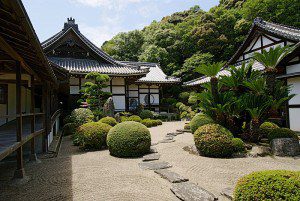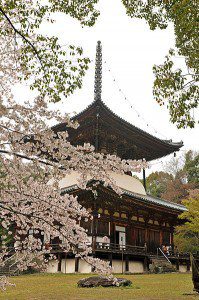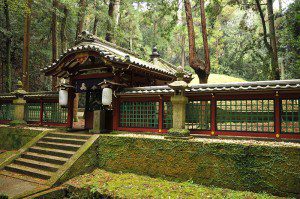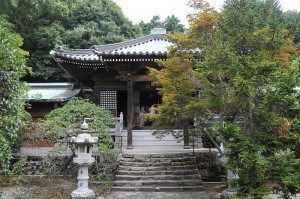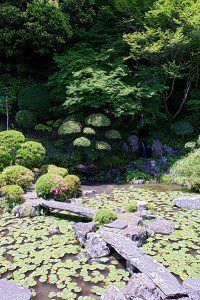Wakayama Tourism, Buddhism and Negoro-ji: Japanese History, Religion and Culture
Tomoko Hara and Sarah Deschamps
Modern Tokyo Times
Japan is blessed with amazing nature and the historical and cultural reality of this unique nation means that you have so many stunning places to visit. Wakayama prefecture is located in the Kansai region and throughout this part of Japan you have beautiful landscapes. Wakayama is also near to Osaka, Kobe, Kyoto and Nara. Therefore, it is a great base to visit many places that are rich in history and culture.
The Negoro-ji area in Wakayama is blessed with many Buddhist temples, exquisite architecture, lovely gardens and this is equally matched by the rich heritage. Also, the mountainous area provides a stylish backdrop and for tourists who adore culture, religion, history, and heritage, then Negoro-ji will certainly appeal.
Kyoto and Nara often spring to mind when you think about special religious places in Japan. However, in truth, Wakayama is equally blessed because of Negoro-ji, Koyasan, Nachi Katsuura and the Kumano Kodo pilgrimage area which runs throughout the Kii Peninsula. On top of this, you have many other amazing places to visit in order to soak up spirituality.
The richness of Negoro-ji in history is abundantly clear because the foundations of this important Buddhist retreat began in 1087. En no Gyoja and Hofuku-Choja laid the foundation stones for this important area for Buddhism in Japan. Indeed, while today the area is called Negoro-ji. In the past it was known by the name of Hofuku-ji in honor of one of the main individuals who gave birth to this amazing place. The stunning view of the Katsuragi Mountains also enhances the entire area because religion and nature appears entwined naturally.
Lee Jay Walker at Modern Tokyo Times comments that “The Buddhist leader Kakuban (1095-1143) is also a very powerful person in the early period of Negoro-ji. This holy Buddhist leader was a firm follower of the revered Kukai who was the founder of Shingon Buddhism. However, Kukai (774-835) belonged to a different period of time in history because now schisms had emerged within this Buddhist branch. Therefore, while it is true that Kakuban developed Negoro-ji to a different level he couldn’t prevent schisms within the Shingon Buddhist faith.”
Lee Jay Walker further comments: “Irrespective of the religious intrigues within Shingon Buddhism the religious leader Kakuban was instrumental in the construction of Enmyo-ji and Jingu-ji. These two places further enhanced the growing power of the Negoro-ji area. The death of Kakuban didn’t alter the continuing power of this remarkable place because more temples were built in and around this vibrant place for Buddhism.”
In another article by Modern Tokyo Times it was stated: “…for hundreds of years the chants of Buddhism were powerful because many amazing temples were built. Also, Japanese gardens will have enhanced the serenity and the mountain peaks were deemed to be sacred. This period of history also witnessed the growing power of high culture within elite communities. Therefore, for several hundred years after the death of Kakuban, the future of Negoro-ji looked promising.”
The same past article continues: “However, just like Oda Nobunaga, Toyotomi Hideyoshi also clashed with Buddhist sects who had military prowess and political ambitions. In 1585 the forces of Hideyoshi burnt nearly every temple to the ground apart from the odd exception and the main Pagoda that survived the devastation. Therefore, in this period of history in Japan it is clear that the central forces of Nobunaga and Hideyoshi feared the power base of several Buddhist sects.”
Luckily for Negoro-ji, Tokugawa Yorinobu in 1623 changed everything because now Buddhism would play an instrumental role within the state during the Edo period. Alternatively, while the rise of Buddhism flourished in the Edo period the Christian faith faced a major inquisition whereby all converts to this religion faced the death penalty. However, some crypto-Christians survived by hiding their faith and by going underground. Also, some Buddhist temples didn’t support the state edicts of Tokugawa therefore they allowed Christians to worship in secret.
Returning back to Yorinobu he allowed the reconstruction of Negoro-ji to take place. The Edo Period would witness the regeneration of Negoro-ji from the utter devastation that engulfed this holy place. Therefore, for the vast majority of tourists or individuals who go on religious pilgrimage to this lovely part of Wakayama, it will be difficult to imagine the carnage which once took place in Negoro-ji. After all, the stunning temples, gardens, lovely gardens and amazing backdrops are of complete serenity. Yet in the sixteenth century it is clear that major leaders in Japanese history did fear the power of Buddhism and because of this Negoro-ji suffered greatly.
Today in modern Japan the area of Negoro-ji is once more at peace and living Buddhism continues to flow. Wakayama is a very beautiful part of Japan to visit because of Koyasan, Kumano Kodo pilgrimage route, Nachi Katsuura, Wakayama Castle, the lovely beaches of Shirahama and so much more.
Lee Jay Walker provided vital information in support of both writers because of living in Wakayama in the past.
Modern Tokyo News is part of the Modern Tokyo Times group
http://moderntokyotimes.com Modern Tokyo Times – International News and Japan
http://sawandjay.com Modern Tokyo Times – Fashion
http://moderntokyonews.com Modern Tokyo News – Tokyo and International
http://global-security-news.com Global Security News – Geopolitics and Terrorism
PLEASE JOIN ON TWITTER
https://twitter.com/MTT_News Modern Tokyo Times
PLEASE JOIN ON FACEBOOK
